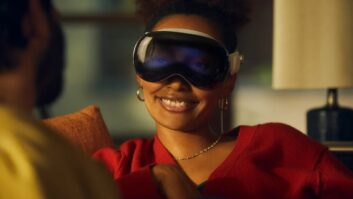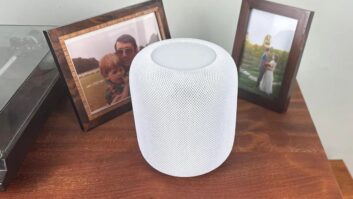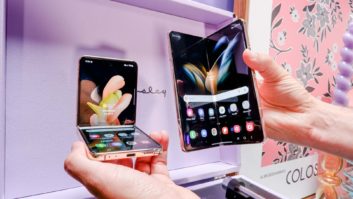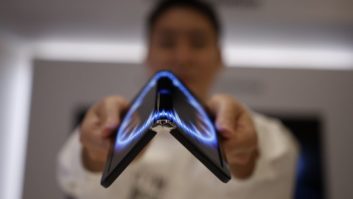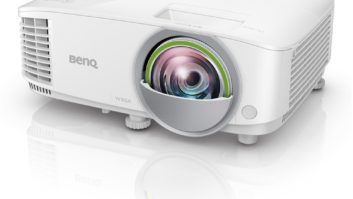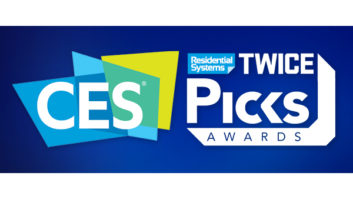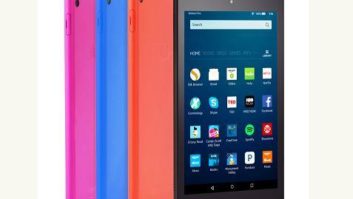
Let me set the scene: Philadelphia airport, F concourse, Friday afternoon and I am heading home after a long week of training. I had an hour to kill until my next flight so I thought I would grab a quick beer before I had to board.
I walked into the bar and noticed that they had just completed a remodel. New stools bolted to the floor directly facing tablets that were bolted to the bar. I have experienced tablets in other restaurants and think it’s a great idea. For 99 cents my wife and I could talk while my son and daughter played video games. We could search the web, or if we choose, place our order. Very cool.
I waited patiently for one of the three bartenders to approach me and take my order, a 20-dollar bill in hand, which is the universal signal for “I am ready to be waited on.” I watched as the three bartenders walked past me multiple times without acknowledging my presence. Five minutes went by without anyone behind the bar even looking in my direction.
As a former bar owner and someone that teaches and preaches about customer service, I was getting rather annoyed at the lack of service. As I was just about to leave out of frustration, the guy at the next stool informed me of rules: “You have to order your drink with the tablet; all they do (referring to the bartenders) is deliver drinks.”
Now I am all for technology, but I wasn’t going to be forced to use it; after all, I’m the customer and this is America.
I called to one of the bartenders – my mistake, “drink deliverers” – to let them know that I just wanted a quick beer and asked politely if they could grab me one. “No, you have to order through the tablet,” was the precise and concise response.
“I have to,” I thought to myself. What happened to customer service? Her quick glance at my 20-dollar bill triggered her second comment: “And they don’t take cash.”
As she went back to delivering drinks, I let my predicament sink in. I have to order through the tablet and they don’t accept cash. From one perspective I get it: no wrong orders, no cash means no theft, no counting money, etc. But from the customer service perspective, I thought, what about travelers that aren’t tablet savvy, or the ones that just don’t have a credit card and only use cash?
Thinking even deeper, I flashed back to one of my favorite television shows, “Cheers.” How long would the show have lasted if Sam, Coach, Woody or Carla were all replaced by tablets and they just delivered drinks? The whole point of a bartender is not to just pour and serve beverages, it’s to interact with the customers, getting them talking about their troubles and their triumphs. It’s about making them feel special and knowing that they will stay and order another drink. It’s about having interactions and conversations with the patrons.
This is also very true about sales people in any organization. It’s the customer experience that gets people to buy and keeps them coming back.
Stuart & Associates was recently brought in by a national retailer to help it with its rollout of tablets to associates on the sales floor. The company had given the sales people tablets and told them that they needed to use them with a large percentage of the customer transactions. It gave a goal of how many transactions should be processed each day with the devices and let the staff know that the transactions would be tracked.
A 30-year veteran of that organization told me he was resigning because he was not going to be forced to use this new technology. Some people just don’t like new technology or change. It takes them out of their comfort zone. This is especially true when the people being asked to use the technology haven’t been shown or received any explanation of how it would enhance and make their job easier. The initial introduction should have explained how it’s going to improve the customer experience and allow the salespeople ways of offering their customers more choices.
We did extensive interviews with the salesforce which clearly identified this flaw in communication. Once we demonstrated to the sales team how the salesperson’s and the customer’s experience was enhanced by the use of this technology, it was quickly adapted by the bulk of the sales force. Not only that, but once we had a discussion around the fact that customers’ buying habits have changed, including customers using technology to do product research and shopping, the salespeople embraced the change. (OK, some reluctantly.) When technology can enhance both the organization and the customer experience, I’m all in.
Now back to the bar. The use of the technology seemed one- sided and short-sighted to me. Sure the bartenders don’t have to talk to the customers and there is little room for shrink or theft. But what about the customer experience? Is it really being enhanced in this case? In my opinion, no. I enjoy the interaction between a good bartender and servers just like I enjoy a good sales interaction. To me the interactions of employees and customers define the service of an organization.
If this is going to be the future of customer service in a bar, maybe they should at least get all the tablets to yell “Norm” when someone walks in. After all, as the theme song goes, “You wanna go where everybody knows your name.”
Tom Hebrock is sales VP of Stuart & Associates, a results-oriented consulting firm that has been helping major retailers and global manufacturers maximize revenue and profit for nearly 20 years. For more information, visit BetterSales.com.





